K E E P I N A N D C A R R Y O N
Description of System
My system is the fashion industry, and I am specifically focusing on the exploitation of fashion retail workers (sales associates) in the United States. My research suggests that (1) retail workers are forced to accept sexual harassment as part of their jobs (2) work in unhealthy appearance-obsessed environments (3) are disrespected, overworked, and underpaid. Since other researchers have said a lot about sweatshop labor overseas, I am looking into a new field that has not been widely touched upon.
Point of View
Prior to research, I was very ignorant about the ethical issues involved in fast fashion. In fact, I contributed to the system frequently by shopping at fast fashion chain stores, supporting and giving money to the companies that practice domestic exploitation of fashion retail workers and overseas exploitation of sweatshop workers. When I used to shop at stores like H&M and Forever 21, I have often found retail workers under fast-fashion companies to be rude and unhappy, and wondered why they are the way they are. I was very curious what working conditions they are put in for them to be so moody. I chose this topic because I wanted to stand in their perspectives and try to understand the various hardships they have to withstand for them to be so unhappy. I feel that all employees should be treated with respect and be happy while working.
Other Relevant Information
The main retail workplace problems I found in my research are:
-Racism
-Sexual Harassment
-Emphasis on appearance
-Long or inflexible hours
-Managers passing work to subordinates
The retail employees I researched work(ed) at Forever 21, Urban Outfitters, American Apparel, Abercrombie & Fitch, Hollister & Co., American Eagle, and Limited Too.
Design Process
The project was challenging because I needed to find a balance between my research and aesthetics. I’ve never had to visualize a research paper and never thought it was possible before this bridge project. The process of making the garment was labor-intensive but I enjoyed it.
If I had more time and resources, I would interview more people and expand into a collection of garments that deal with ethical issues in the fashion industry.
Some strategies of objectivity I used were:
1) Directly using their individual experiences and the messages they received in my studio final
2) Asking objective questions in interviews
For example:
What was the most difficult part of your job?
Do you think the work you did matched your pay?
3) Allowed interviewees to go off tangent and share what they wanted to
S K E T C H
D R A P I N G I N M U S L I N
P A T T E R N S
W R I T I N G
asking interviewees to cut out fabric pieces and write the harassing messages they received – emphasizing their internalization
Other Questions
What other layers of the corporate fashion industry are exploited?
What are other ethical issues can inspire me creatively?
Link Between Seminar Paper and Studio Project
I used direct quotes from my seminar research for my garment.
The garment pocket idea was sparked by this section of my research paper:
I was initially interested in animal rights in the fashion industry, and my interest has led me through research in different layers of the system. For my annotated bibliography, I researched about sweatshop labor, child labor, and environmental destruction by the industry. For my actual research paper topic, I then researched retail exploitation. I interviewed 4 people and used the experiences of 8 other people who shared their experiences on Youtube, Thought Catalogue, and the Gawker.
The Importance of Research
Research is very important because it gives artwork societal relevance. I also feel more confident in talking about my artwork because of all the research I have done. Research is an important part of any creative process because we need to know what is going on in the world in order to effectively contribute to it. In terms of my field of of study (fashion design), ethnography can be extremely useful in trend-spotting and finding out what styles are popular in a given area.
Reflection
I feel great about this project because it is a reflection of what I want to be doing in the future: using art and design to help others. I never thought I would become a voice for retail employees when my initial interest was animal rights in the fashion industry. I liked how my interest led me to discover and learn about a whole new field. In the future, I want to continue to use my skills to stand up for those in need. If there was anything I could have done differently, I would have made an entire outfit based on my research or even expanding the garment into a collection, using fashion to comment on the unethical practices of the industry.
F I NA L
front pocket messages:
back pocket messages:
I N T E R A C T I O N
A R T I S T S T A T E M E N T:
Keep In and Carry On
Helena Wang
Keep In and Carry On is an interactive garment piece inspired by my research on the exploitation of fast-fashion retail employees in the United States. My research reveals that retail employees must constantly keep the negative messages they receive from customers, managers, and co-workers to themselves. The messages include sexual harassment from customers, appearance-judging from co-workers, and racial-profiling from managers. I tried to convey this concept by sewing 12 red pockets, each carrying a different message that my research subjects received.
The messages placed in the front pockets of the garment are said to employees upfront, while messages placed in the back pockets of the garment are said behind their backs. The piece intends to bring attention to how retail employees must keep in these messages and carry them through every shift. They must internalize every message since they cannot talk back to customers and managers.
To play on the idea of internalization, I asked my interviewees to cut out a piece of muslin and write the messages they received in a color of their choice. The audience is encouraged to reach into the red pockets and discover what a retail employee carries.
Like many of my other works, this piece brings attention to current-day ethical issues. As an artist, I do my best to use my skills and knowledge to help others.
F I N A L P A P E R:
Retail Exploitation Final Paper
P R E Z I:
https://prezi.com/ldjf5gvry5vm/fashion-retail-exploitation-presentation/

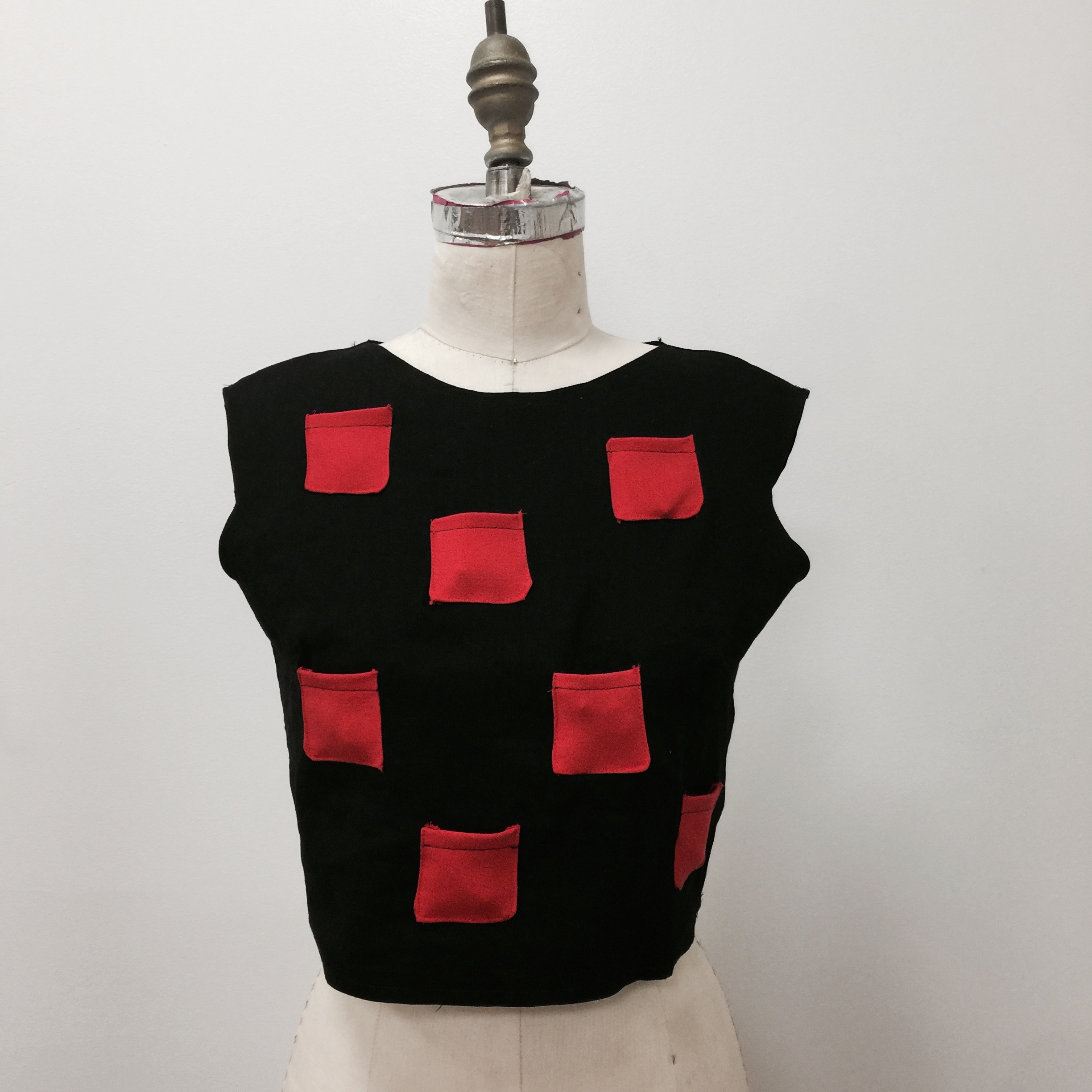




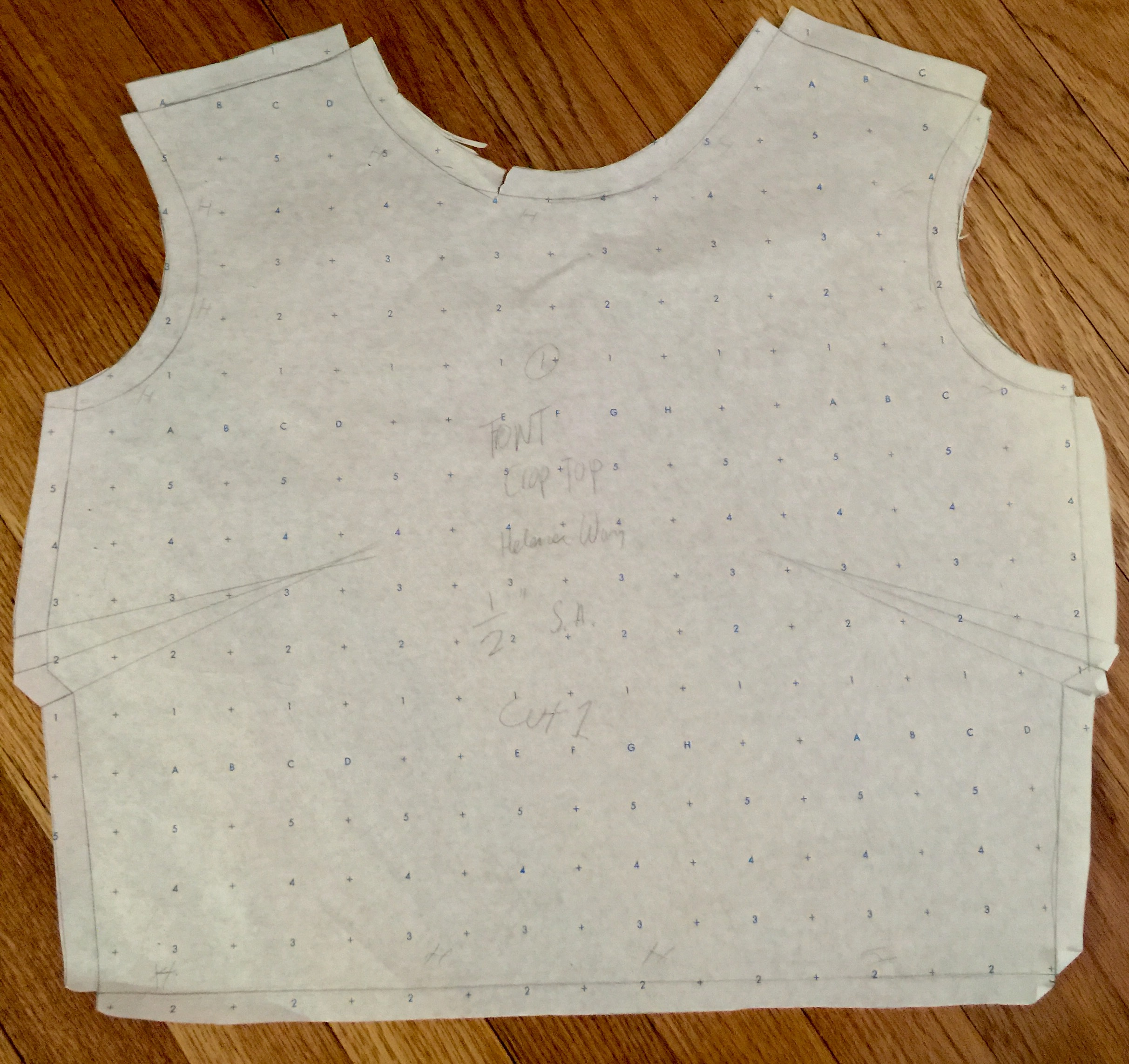
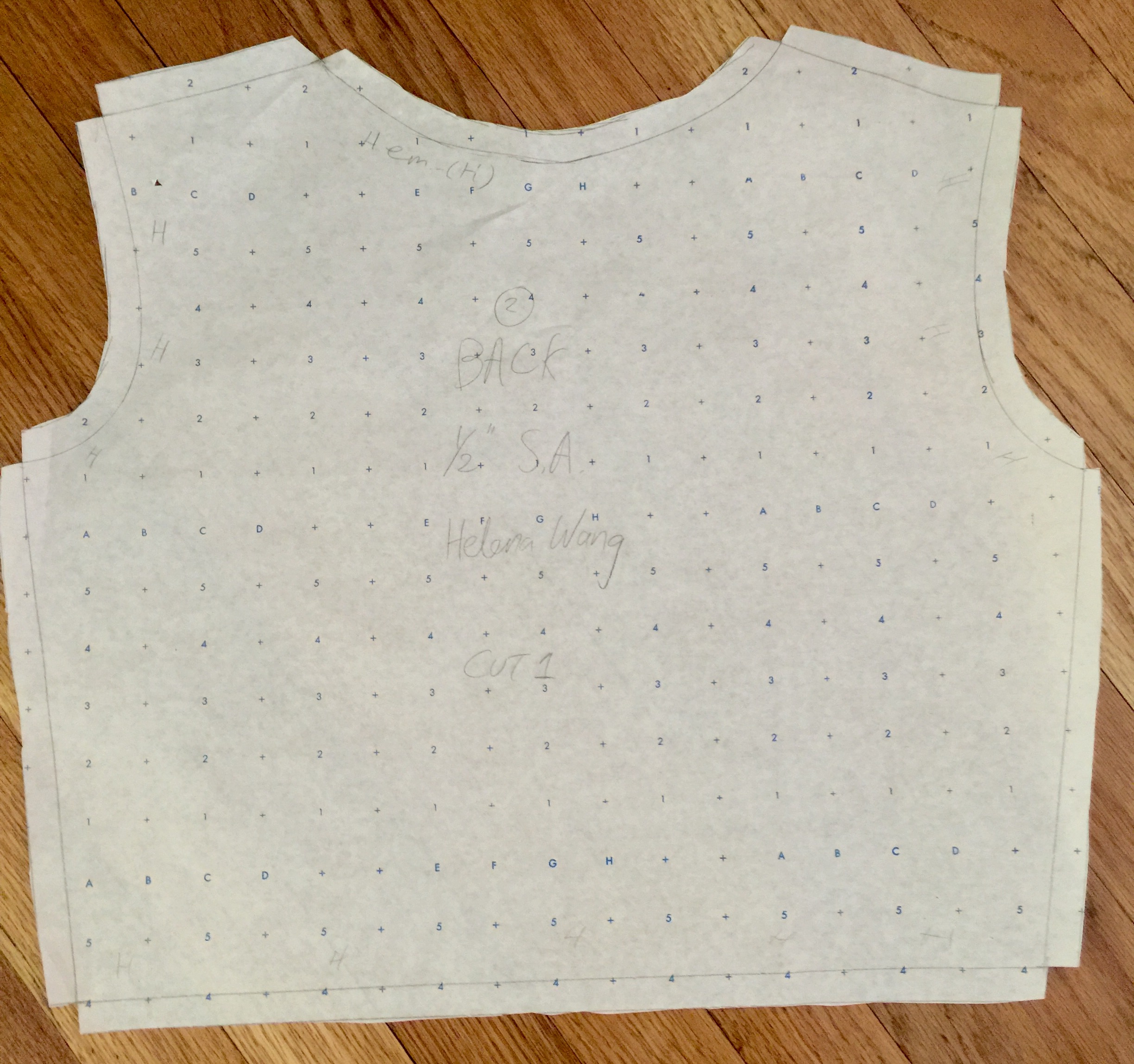
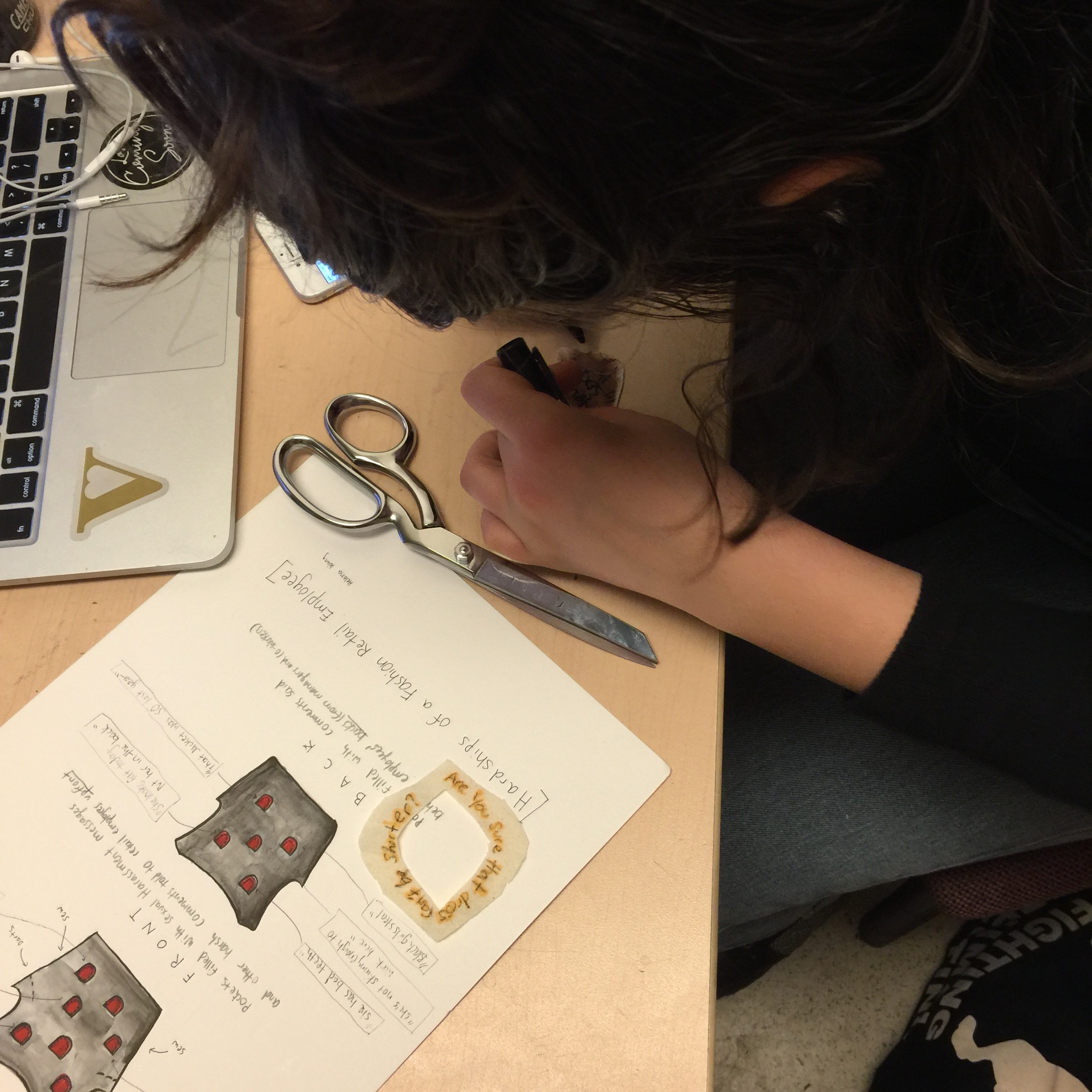
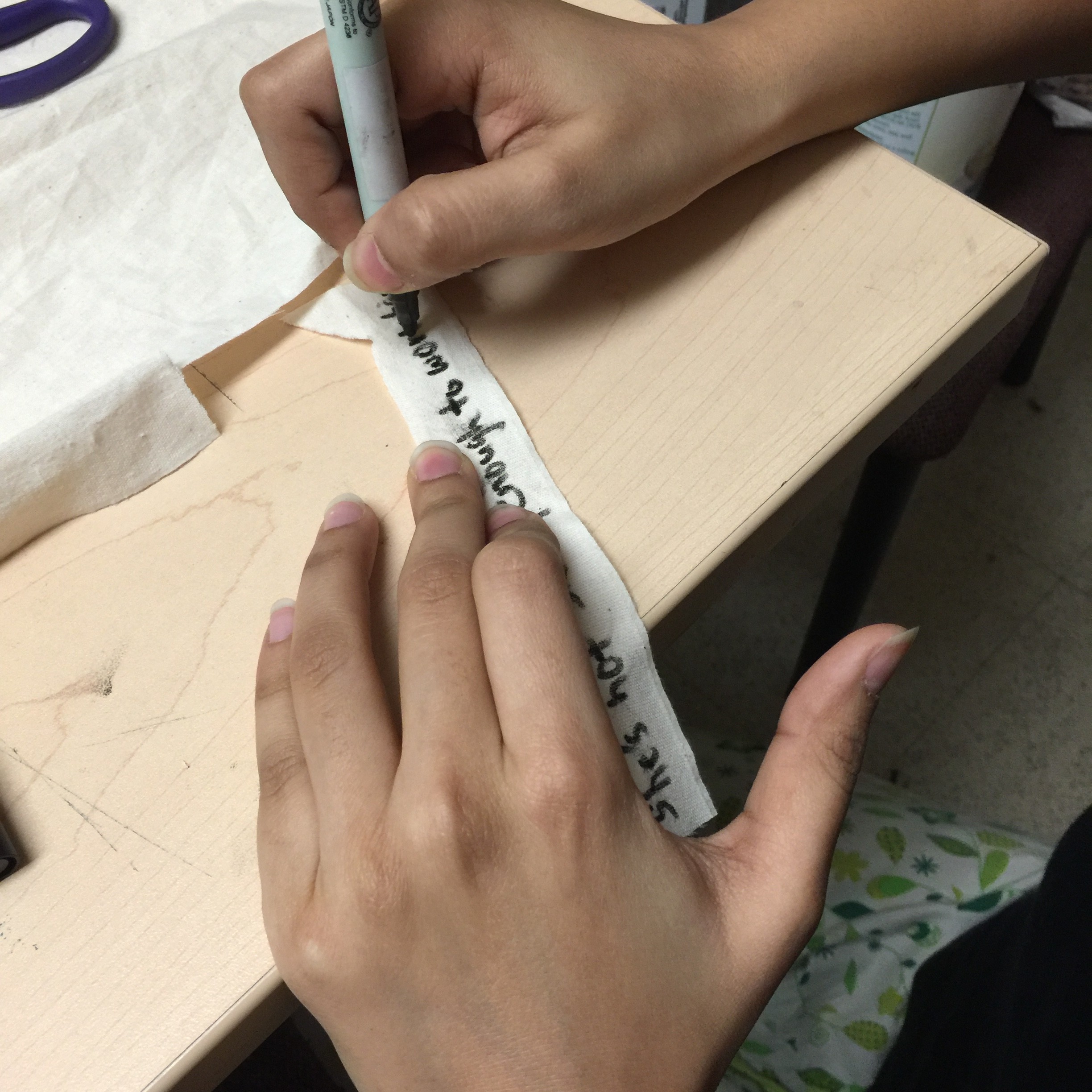
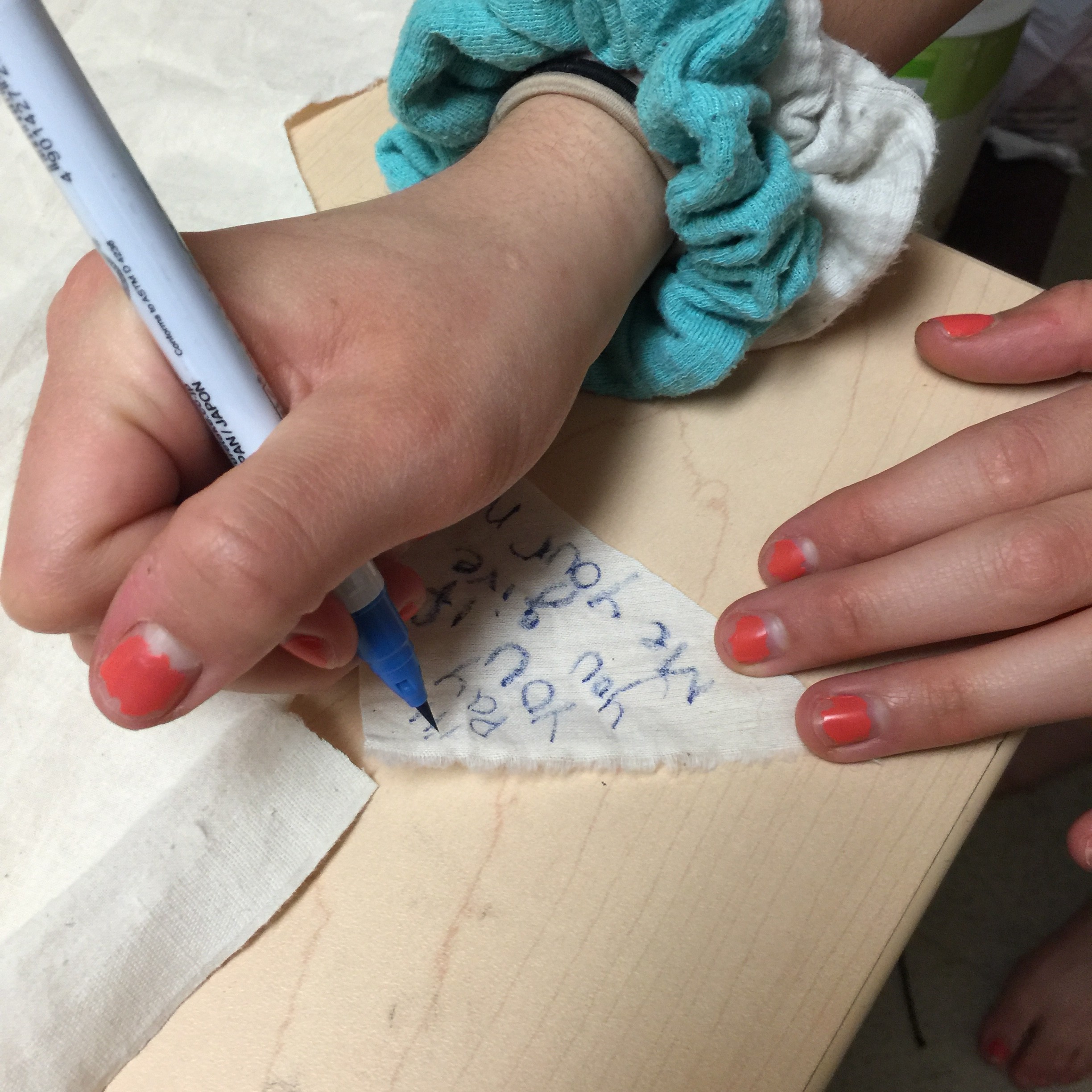


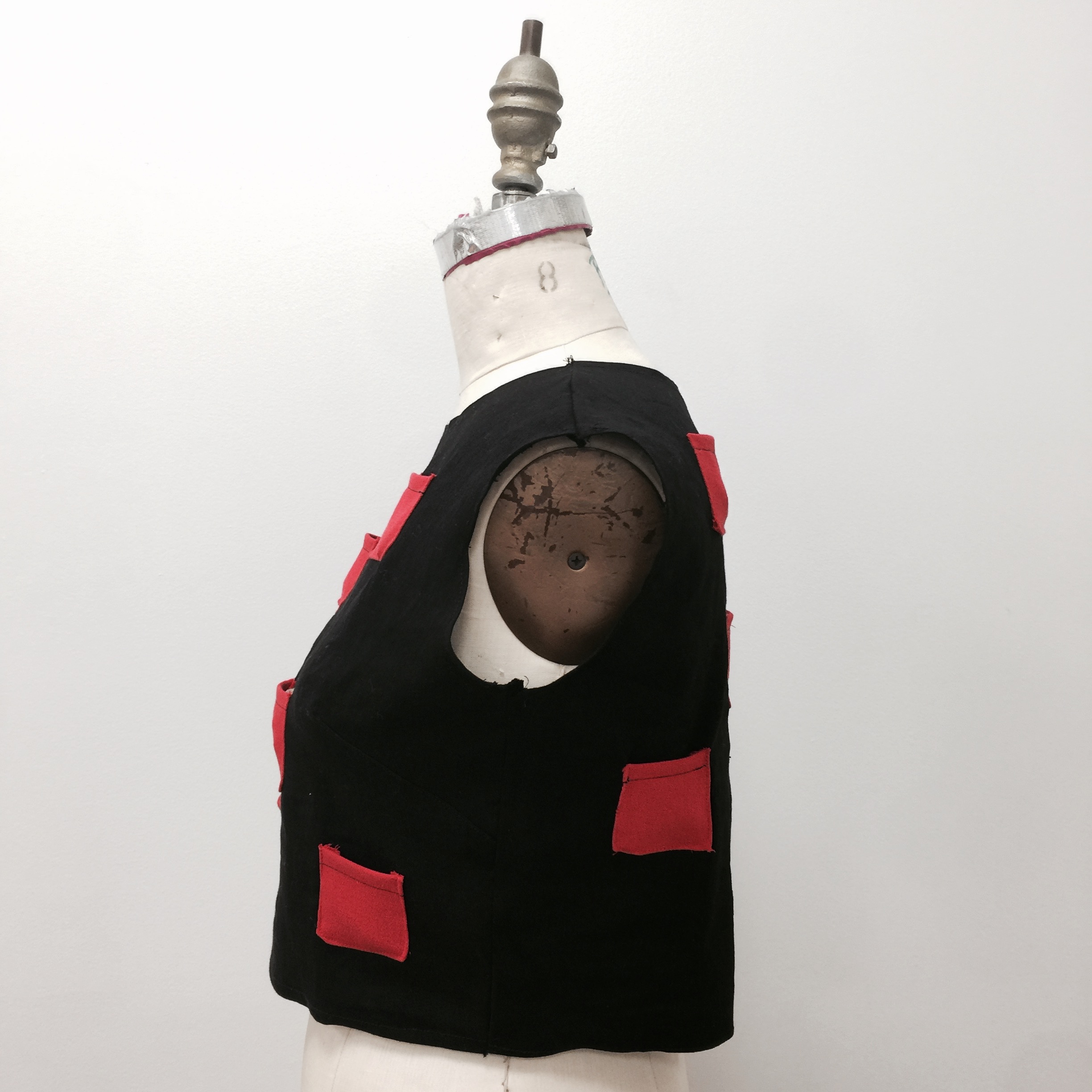



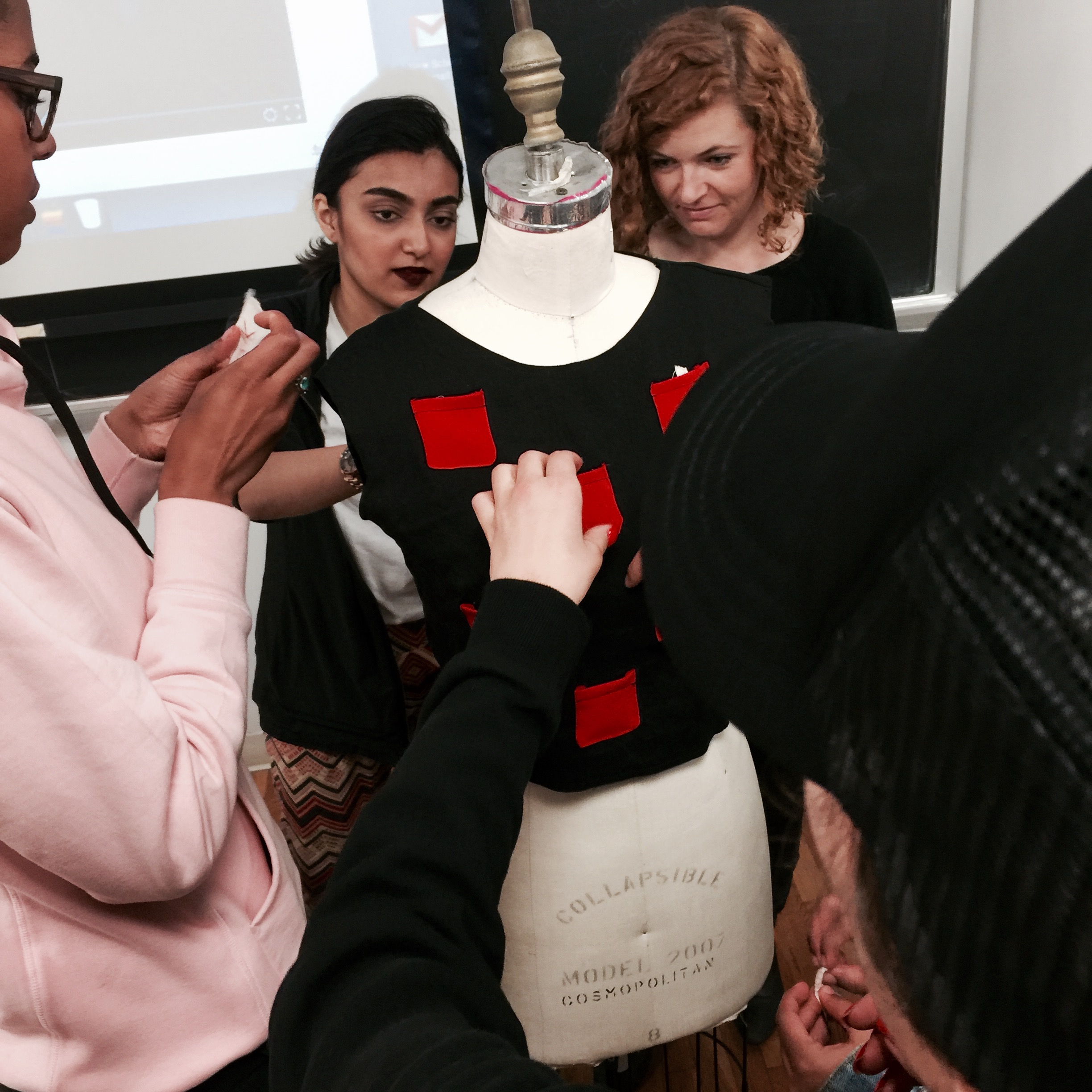
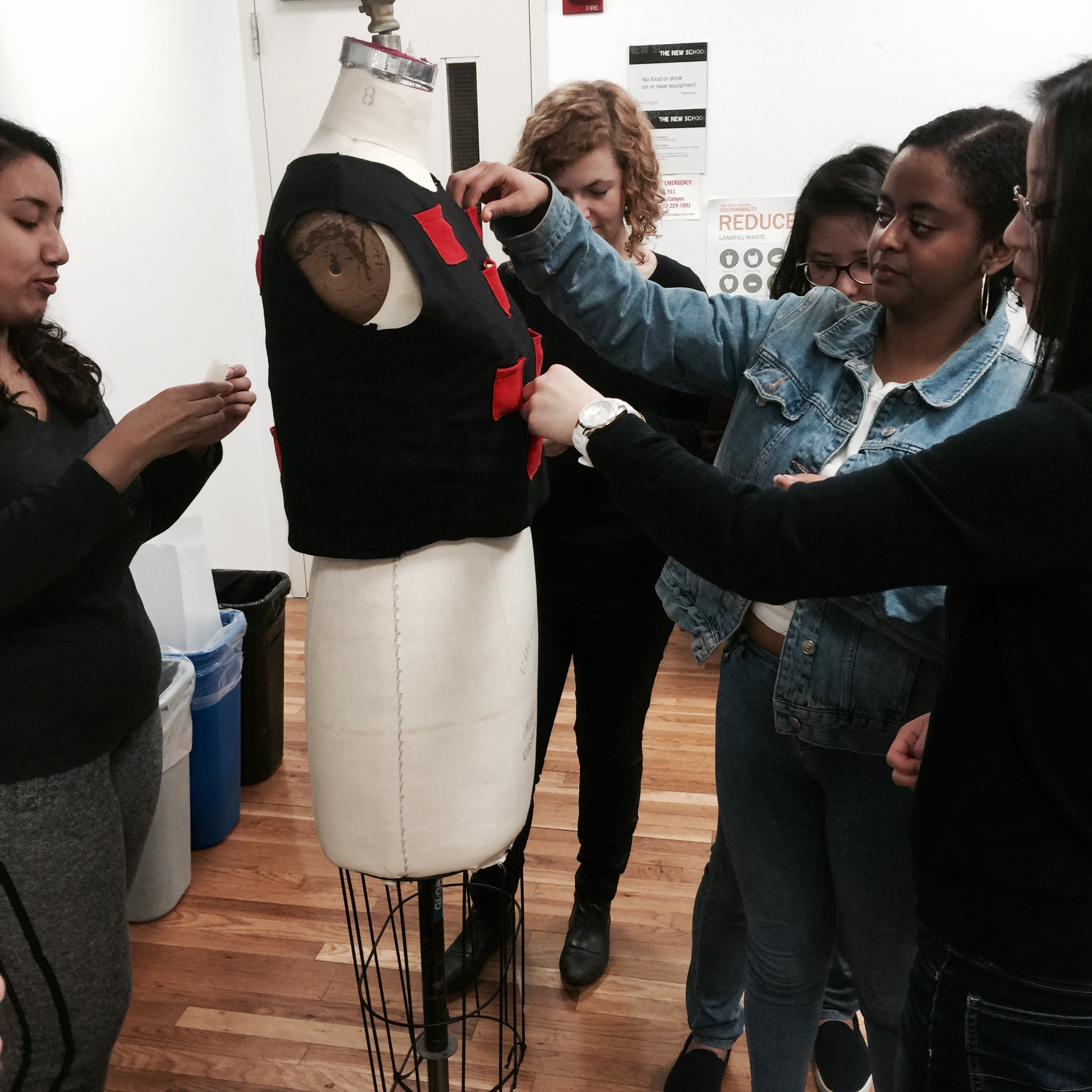
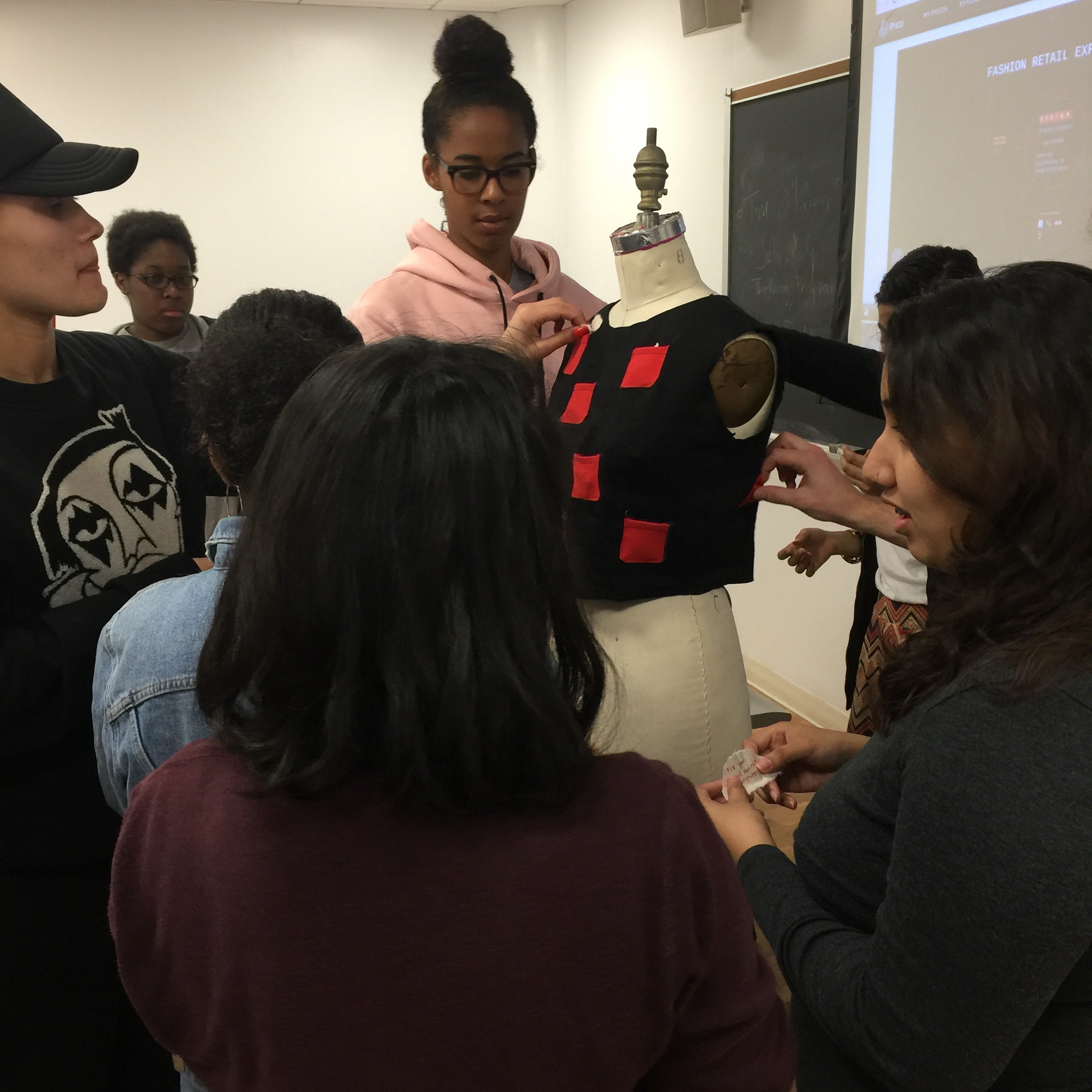
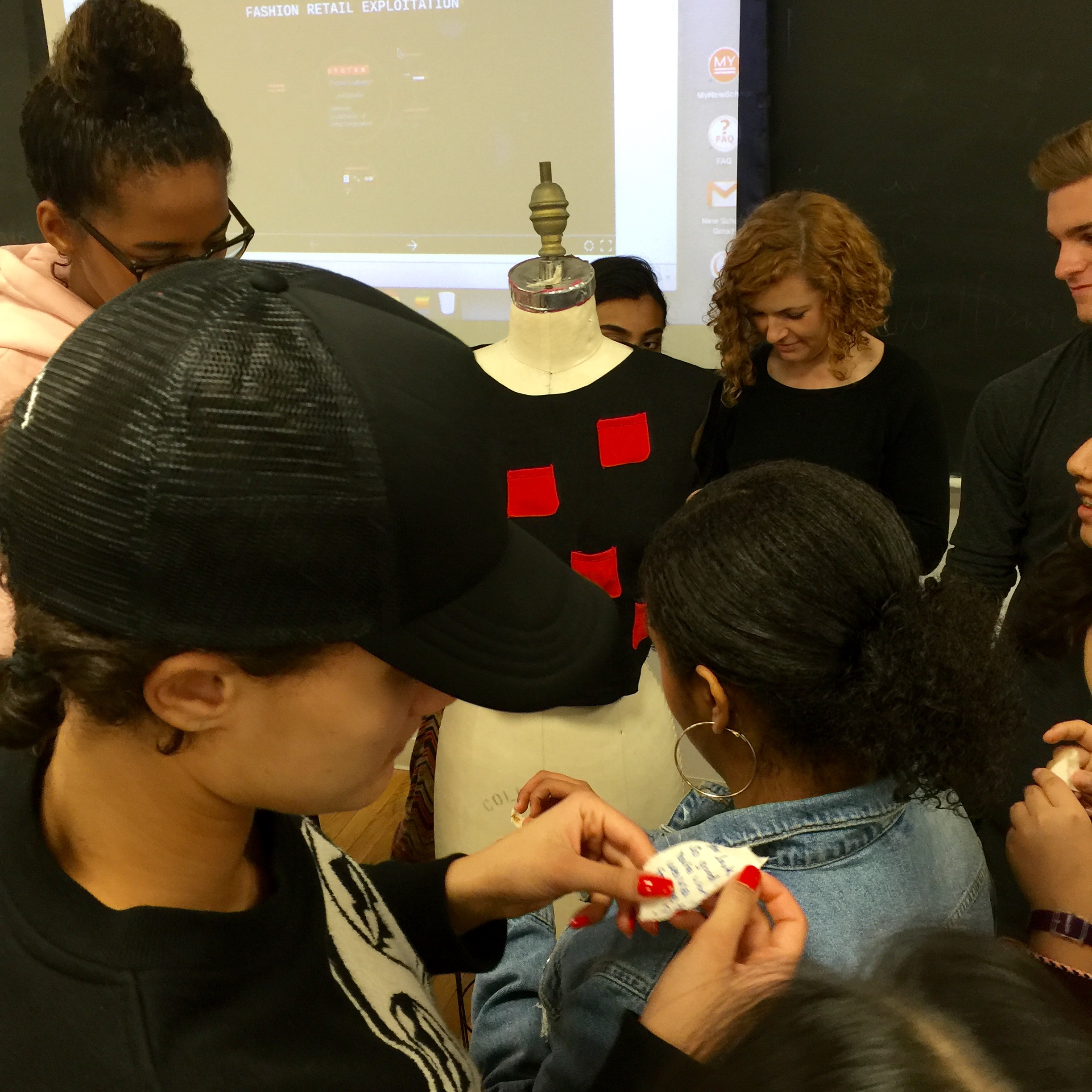
This was clearly a well thought out essay topic. I love the design and the idea of putting the comments in the pockets. Great work, Helena!